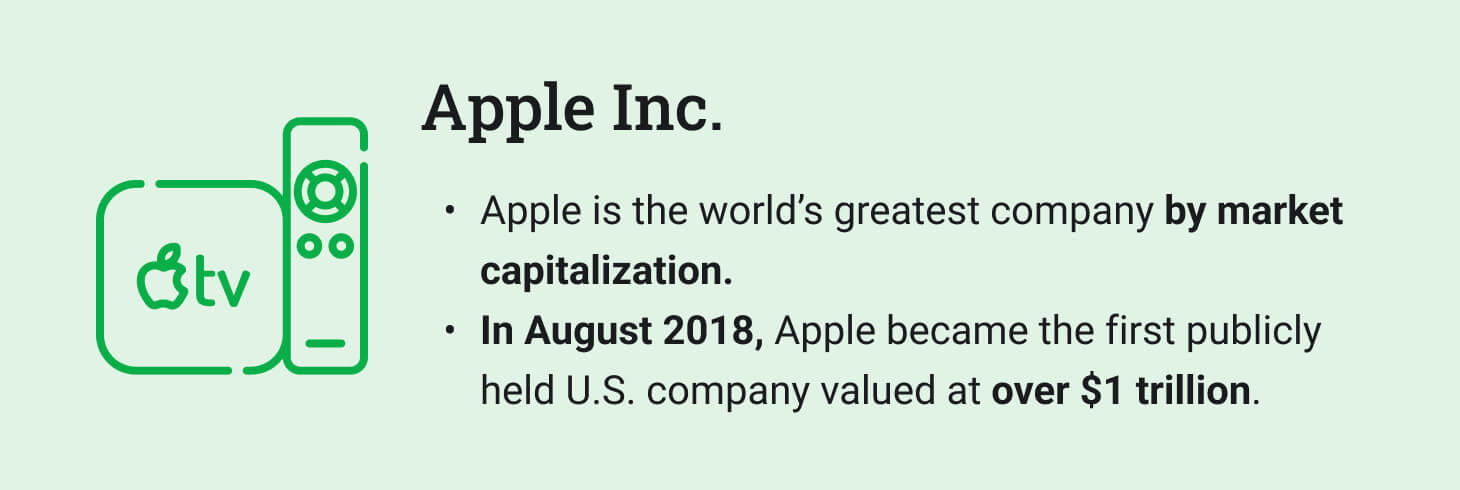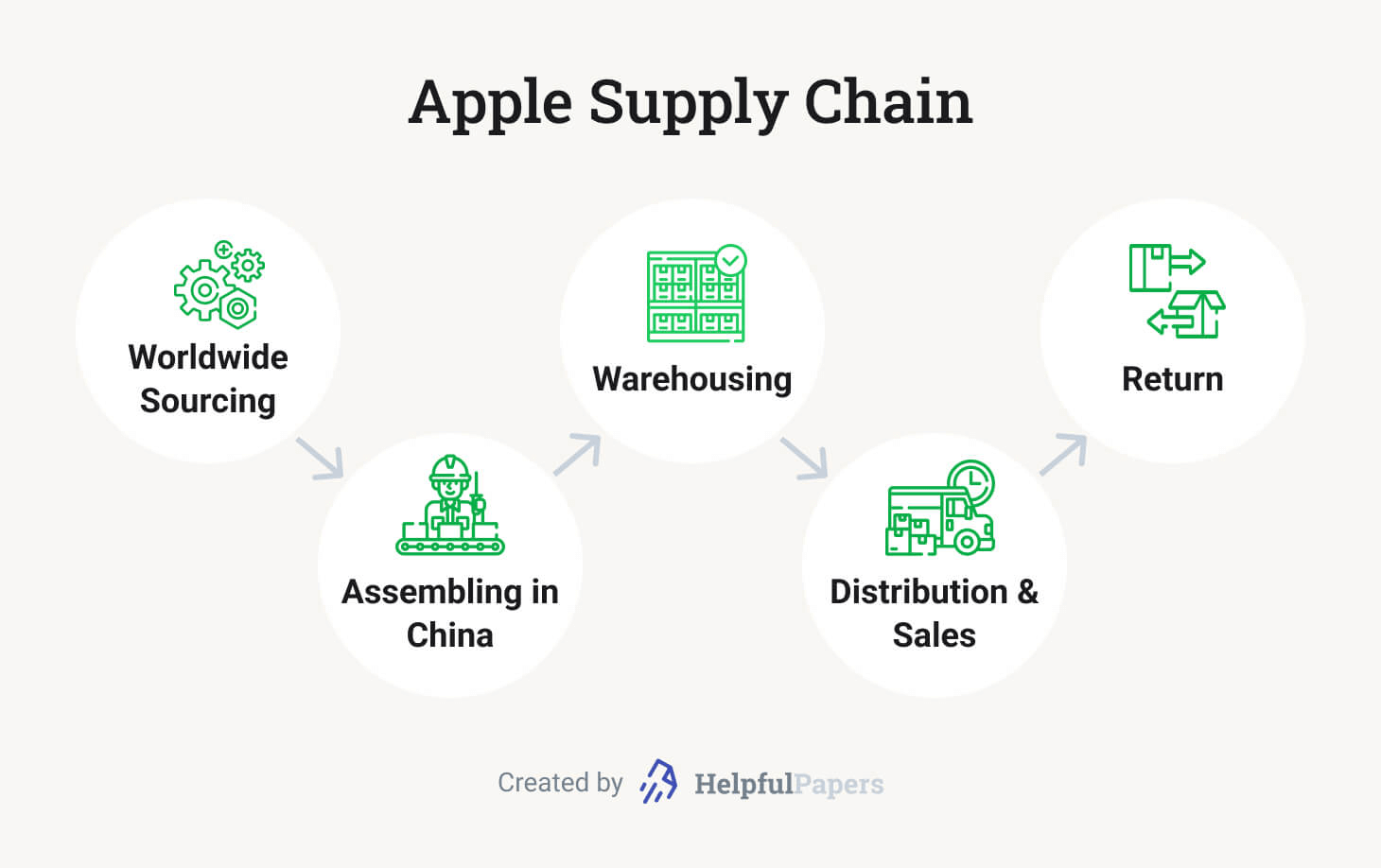
Do you know that Apple earns nearly one hundred thousand dollars per minute? This information may not be surprising because Apple is the world’s most valuable company. However, there are numerous challenges the corporation has faced on its way to success. You can learn many business lessons by doing the Apple case study, and we are here to help!
🍏 6 Fun Facts About Apple Inc
- There has been a mystery surrounding the brand’s name. However, the word ‘Apple’ simply came from the founder, Steve Jobs’ favorite fruit.
- Originally Apple had three co-founders: Steve Jobs, Steve Wozniak, and Ronald Wayne. Ronald Wayne left the company only 12 days after its foundation.
- Apple employs more than 154,000 people, which could be a good-sized town population! Millions more people make money from selling Apple products in local shops.
- Apple’s first company logo was a drawing of the father of physics, Isaac Newton.
- The creator of the iPod, Tony Fadel, initially offered the device to Real Networks and Philips, but they turned it down.
- Apple created the digital color camera. The Apple QuickTake was introduced in 1994 and was one of the first consumer digital cameras.
👍 Best Ideas for an Apple Case Study
Numerous internal and external factors influence Apple company’s financial performance. When doing the Apple case study, choose the sphere that interests you the most and think of what can be improved. Here’s a list of topics that may pique your curiosity:
- The history of Apple company.
- Corporate values of Apple.
- Key Apple’s products and services.
- Importance of technology and innovation in Apple.
- Apple’s corporate identity.
- Apple’s online presence and e-marketing.
- Apple’s supply chain.
- Labor practices in Apple.
- Apple’s executive management.
- Apple’s strategic management.
- The role of Apple’s board of directors.
- Apple’s privacy policy.
- Marketing strategies in Apple.
- Apple’s financial figures over the years.
- Apple’s eco-initiatives.
- Criticism of Apple.
- Apple’s customer support.
- HR strategy in Apple.
- Apple’s crisis management strategy.
- Apple’s primary competitors.

📝 Apple Supply Chain Case
- How does Apple organize its supply chain operations?
Apple buys components and materials from various suppliers worldwide. Then the company gets them shipped to the assembling plant in China. From there, products go directly to retail stores and consumers who buy online. - Main advantages of Apple’s inventory management
Apple’s strategy is to keep as little inventory on hand as possible. The company can’t afford to keep too many products in stock because a sudden move from a competitor or an innovation can dramatically decrease the value of products in inventory. - Apple’s use of multiple suppliers
Apple has an extensive network of suppliers in its supply chain in 31 countries worldwide. It allows the company to successfully mitigate disruptions or delays and process large volumes of pre-orders. - What can other businesses learn from Apple’s supply chain strategy?
The main advantage of Apple’s supply chain is the multiple suppliers strategy. Businesses should be encouraged to use alternative suppliers to reduce single-supplier risks and improve financial performance.
🍀 Sustainability of Apple
- Apple lowers the use of carbon materials
Since the creation of the iPhone in 2007, the company has sold over 1.5 billion units. To make the iPhone design more energy-efficient, the company developed an innovation. They created “Dave,” a recycling robot that recovers rare materials such as earth magnets from old phones. - Apple’s use of renewable energy
Moving to renewable energy is a crucial component of Apple’s green policies. Apple’s headquarters in California is 100% powered by solar panels. It contributes to a positive effect on pollution globally and locally. - Apple is innovative in its materials
Apple works closely with two aluminum suppliers to develop the first carbon-free aluminum process. They have already forged highly low-carbon aluminum used for parts and components in MacBook Pro. - Apple reduces the use of conflict materials
A common source of “conflict minerals” is the Democratic Republic of Congo, an area with ongoing human rights violations. Apple has ceased relationships with mineral providers that fail to be certified as ethical and conflict-free.

👩 Apple’s Human Resource Management
- Apple’s human resources strategies
The HR specialists of Apple always seem to hire diverse, independent, and talented employees. Most of the employees are provided with training once they join the company. Apple encourages workers to build self-reliance and practical skills to ensure they are mentally ready to jump from one big project to another. - Apple’s cultural values and employees’ growth
Apple is one of the biggest job creators in the US, providing positions for designers, marketers, hardware and software engineers, scientists, etc. Apple offers considerable opportunities to its employees to climb the career ladder and develop free-thinking and creativity. - Employees’ rewarding system in Apple
Apple runs Apple Fellow Program to recognize employees’ significant contributions to the company. Those employees are rewarded and later on designated as team leaders. The company also provides competitive wages, monthly benefits, and periodical grants that serve as a reward to the best employees.
🎨 Design Thinking and Innovation at Apple
- Apple adopting design thinking
Design thinking is a human-oriented approach to innovation that Apple applies. This principle is used to achieve innovation considering the consumer at all the development stages. Apple adopts design thinking by considering the form and function of its products. - Apple’s user-friendly products
When it comes to understandability, Apple successfully integrated it into its products. Apple designs products that are easy to use so that new users rarely consult manuals or guides. Apple highlights that they build user-friendly products rather than complex, hard-to-use ones. - The simplicity behind Apple’s products
One of defining characteristics of Apple’s design is simplicity. The company designs its products to look clean, simple, and straightforward. At the same time, Apple products are instantly recognizable at first glance and have now become status symbols. - Apple designs for the future
When it comes to design, Apple is a pioneer. The company’s design team start working on a new design two years beforehand. So, when Apple introduces a new, cutting-edge design, competitors will not have a chance to copy it.

💻 Apple Crisis Management Case Study
- FBI asked Apple for unlimited access to any iPhone user in 2015
After the tragic San Bernardino terrorist attack in 2015, the US government demanded Apple release a new iOS, which would give them access to users’ private information. Apple refused this demand by writing a public letter. In this letter, the company highlighted that they always put the customer first. - Apple’s supply chain crisis in 2021
At the beginning of October, most of China shuts down for the Golden Week holidays. Phone and iPad assembly was halted for several days due to supply chain constraints and restrictions on the use of power. Consequently, Apple was forced to scale back its total production goal for 2021. This crisis illustrates how external factors can influence even tech giants like Apple. - Apple’s plan to get through the COVID-19 crisis
At the beginning of the pandemic, CEO Tim Cook stressed the company’s plan to keep its eyes on the road and its hands on the wheel. The goal was to keep investing in developing future products and services no matter what. For example, Apple has been working on how an Apple Watch can provide any warning of Covid-infections.